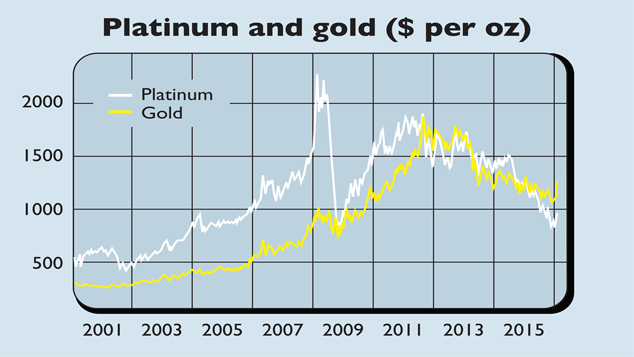
Despite a small rally in the past week to $940 per ounce, platinum prices are still 25% below where they were a year ago – and, unusually, well below the current gold price. Even more surprisingly, it’s also underperformed its sister metal, palladium, which – like platinum – is primarily used in catalytic converters in the auto industry.
The big problem is oversupply, says Alexandra Wexler in Barron’s. There’s been “strong growth in the recycling of catalytic converters”, while the “plunging South African currency is prodding miners to heap the metal into the global market”. There is also the possibility that “shallower, more mechanised mines” could add “additional, cheaper supplies to the market”. But it’s not just supply – there’s been a drop off on the demand side too, say Ese Erheriene and Alexandra Wexler in The Wall Street Journal.
For a start, “the fallout from the Volkswagen emissions scandal is threatening to curb demand” for diesel-powered vehicles (platinum is used in catalysts for diesel engines, while petrol ones use palladium). Meanwhile, demand from the jewellery trade has also weakened as Chinese consumers cut back due to their country’s “fraying economic growth”.
Still, platinum’s weakness might not continue for much longer, says Capital Economics. There are already some signs that conditions in China have begun to improve, while total vehicle production has picked up.
Meanwhile, investment cuts by miners should start to curb production, with output in South Africa expected to fall by 5% in 2016 and 8% in 2017. So the platinum price should “stage a recovery over the next few years”. Traders interested in betting on a rebound could consider the ETFS Physical Platinum (LSE: PHPT) exchange-traded fund.